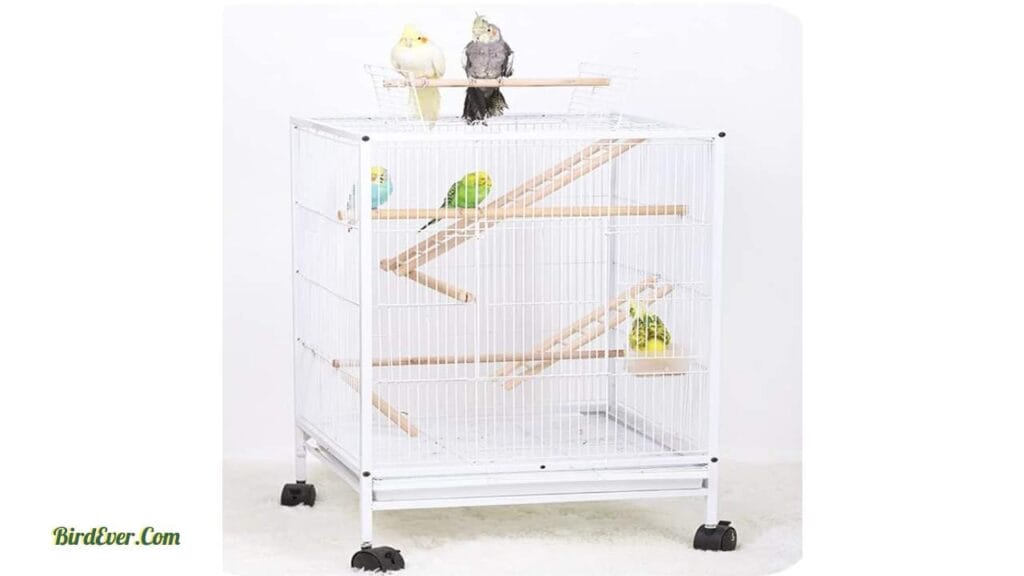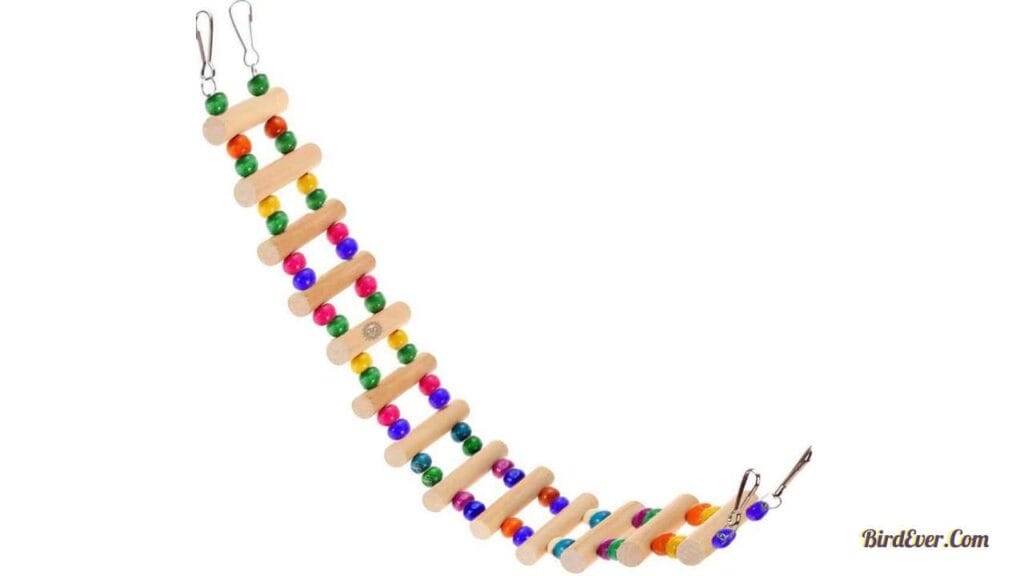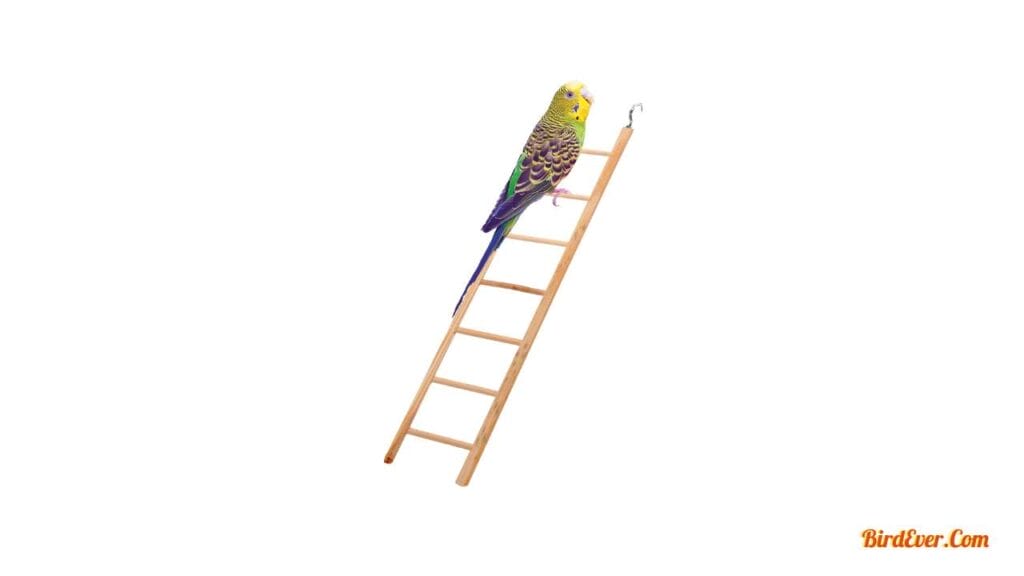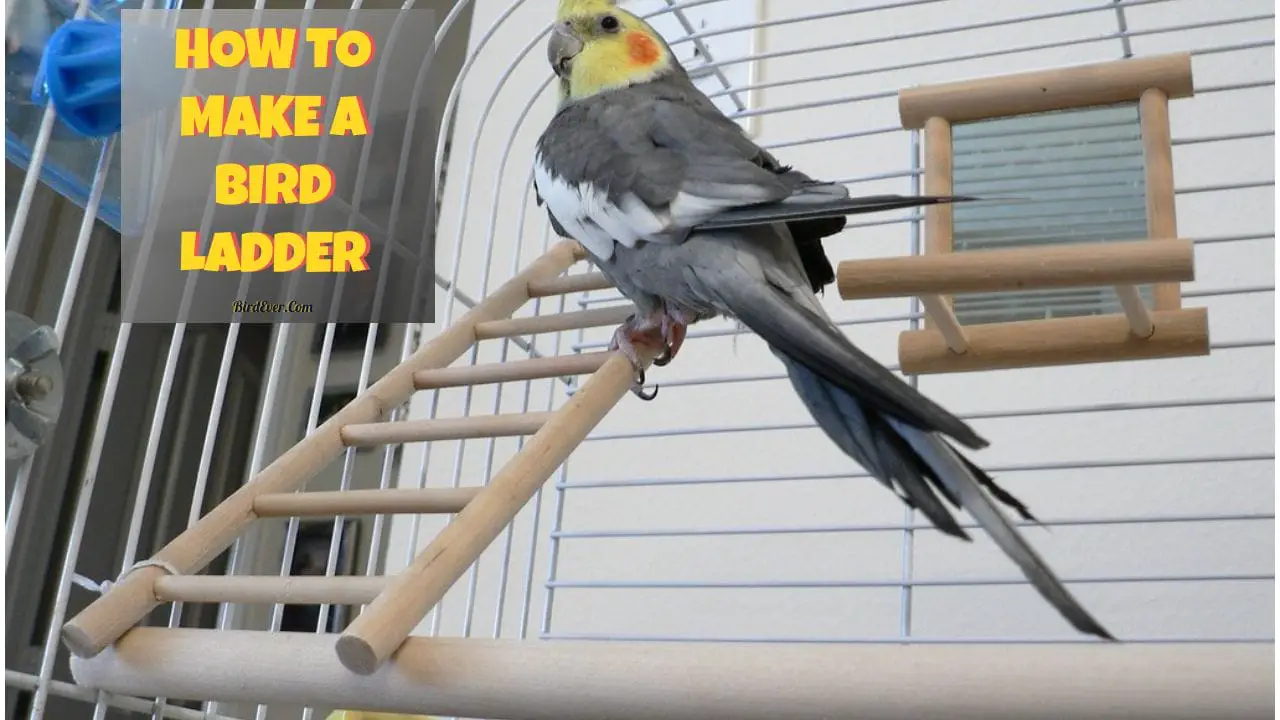How to Make a Bird Ladder at Home?
How to make a bird ladder? This might be one of the common questions of bird owners like John. But how? Let us share a story with you.
Once upon a time, in a bird owner’s paradise, there was a little parakeet named Polly. Polly loved to explore her cage and play with all of her toys, but she always felt like something was missing.
You see, Polly had seen other birds in the neighborhood with fancy ladders that they could climb up and down on, and she wanted one for herself.
So, her owner John set out on a mission to create the perfect bird ladder for Polly. After doing some research and gathering supplies, they began crafting a ladder that would not only be functional but also stylish and fun for Polly to use.
In this blog post, we will take you through the step-by-step process of making your very own bird ladder. From choosing the right materials to assembling it with love and care, we’ll cover everything you need to know to create a ladder that your feathered friend will adore.
So grab your tools and get ready to embark on a DIY adventure that will bring joy and excitement to your beloved bird. Let’s dive in and learn how to make a bird ladder that will have your feathered friend chirping with delight!
Is A Bird Ladder Essential?
Bird ladders are essential for promoting physical exercise and preventing boredom in birds like cockatiels and budgies.
They help develop coordination and balance skills, provide mental stimulation, and prevent behavioral issues.
In addition, bird ladders help birds learn to fly and perch securely.
By supporting natural behavior such as climbing and exploring, bird ladders enhance the overall well-being and quality of life for our avian companions.

Benefits of Bird Ladders
Bird ladders offer multiple benefits to our avian companions. Such as:
- They provide exercise opportunities for physical health, stimulate mental engagement, and prevent boredom.
- Bird ladders also encourage natural behaviors like climbing and exploring, supporting the development of coordination and balance skills.
- When bird ladders are properly installed, they provide a safe and easy way for birds to get from one level of a tree to another.
- Bird ladders also allow birds to escape danger or capture prey more easily.
- Ultimately, they enhance the overall well-being and happiness of pet birds.
Required Materials for Creating a Bird Ladder
To create a bird ladder, you will need sturdy dowel rods for ladder rungs that provide a comfortable grip. Ensure the materials used are non-toxic to prioritize the bird’s safety.
Use durable ropes or chains for ladder support. You can also add optional features like bells or toys for added entertainment.
How to Make a Bird Ladder? Step-by-Step Guide
Do you have a pet bird that loves to climb and explore? If so, a bird ladder can be a great addition to their cage. Not only will it provide them with exercise and mental stimulation, but it can also help keep their feet healthy and strong.
In this step-by-step guide, we’ll walk you through the process of making your own bird ladder. From gathering the materials to assembling the pieces, we’ll cover everything you need to know to create a safe and fun climbing toy for your feathered friend.
So arrange your tools and get ready to build a bird ladder that will have your pet chirping with joy! To make a bird ladder, follow these step-by-step instructions:
Step 1: Gather the Materials

- Wooden dowels or branches: Choose sturdy and non-toxic materials for the ladder rungs. Cut them into equal lengths, depending on the desired length of your ladder.
- Nylon rope or twine: Use a strong and bird-safe material to tie the rungs together.
- Drill and drill bit: You will need these tools to create holes in the wooden dowels for threading the rope.
Step 2: Measure and Mark
- Decide on the spacing between each rung. Aim for approximately 4-6 inches between each step.
- Use a ruler or measuring tape to mark where you will drill holes on each dowel.
Step 3: Drill Holes
- Take one of the wooden dowels and secure it in place. Use a drill with an appropriate-sized drill bit to create a hole near one end of the dowel.
- Repeat this process for all the remaining dowels, making sure to align the holes at consistent heights.
Step 4: Thread the Rope
- Begin by tying a knot at one end of the rope.
- Thread one end of the rope through all the holes in one row of dowels, starting from one end and working your way to the other end.
- Once all the dowels are threaded onto the rope, tie another knot at that end to secure them in place.
Step 5: Securely Attach the Ladder
Now that you have threaded all the dowels onto the rope, it’s time to securely attach the ladder to your bird’s cage or play area. Here’s how you can do it:
- Find a spot in your bird’s cage or play area where the ladder can be easily accessed and won’t obstruct your pet’s movement.
- Hold the ladder against the desired location and mark where you will attach it. Make sure it is at a comfortable angle for your bird to climb on.
- Depending on the type of cage or play area you have, you can use hooks, carabiners, or fasteners to securely attach the ladder. Make sure they are bird-safe and able to hold the weight of the ladder.
- With the hooks or fasteners in place, carefully hang the ladder on them. Double-check that it is stable and does not wobble before allowing your bird to climb on it.
Step 6: Test and Observe

- Once the ladder is securely attached, introduce it to your bird and observe their interaction with it. Some birds may take to it immediately, eagerly hopping onto the ladder and exploring their newfound vertical playground.
- Others may need a bit more encouragement and patience. Offer treats or rewards to entice your bird to climb onto the ladder, praising and reinforcing positive behavior.
It’s important to remember that not all birds will immediately take to the ladder. Some may require gradual acclimation, starting with shorter distances between the rungs and gradually increasing the spacing as their confidence grows.
Pay attention to your bird’s body language and comfort level, ensuring they feel safe and secure on the ladder.
Also read: Unique Hummingbird Feeders with Perches
FAQs
What is the right size for a bird ladder?
The right size for a bird ladder will vary depending on the size and species of your bird. Generally, the ladder should be wide enough for your bird to comfortably grip with its feet and tall enough for it to climb and explore.
It is recommended to have varying spacing between the rungs to provide different levels of challenge for your bird.
Are there any safety considerations when making a bird ladder?
Yes, there are safety considerations when making a bird ladder. It is important to ensure that the ladder is stable and secure, with no loose or wobbly parts.
The rungs should be spaced appropriately for the size of the birds using them, allowing them to comfortably grip and move between rungs.
It is also important to use non-toxic materials that will not harm the birds if they chew on the ladder. Regular inspection and maintenance of the ladder are recommended to ensure its continued safety and functionality.
Should the ladder be straight or curved, and why?
When it comes to deciding whether your bird ladder should be straight or curved, there are a few things to consider. Both options have their advantages and can provide unique experiences for your feathered friend.
A straight ladder offers simplicity and a straightforward climbing experience. It allows your bird to easily navigate from one rung to another in a linear fashion can be particularly beneficial for birds that are just starting out on ladders or those who prefer stability and predictability.
On the other hand, a curved ladder adds an element of challenge and excitement. The curves create varying angles and heights, requiring your bird to use more balance and coordination when climbing. This can be a great way to provide mental and physical stimulation for your bird, promoting exercise and agility.
What wood is bird ladders made of?
Bird ladders are commonly made from safe and durable materials such as natural wood. It is important to choose a type of wood that is non-toxic and bird-friendly. Some popular choices for bird ladder construction include hardwoods like birch, maple, and ash.
These woods are sturdy and can withstand the weight and movements of your bird. However, it’s important to avoid using softwoods like pine or cedar as they can be harmful if ingested by your bird.
Always ensure that the wood used in the ladder is untreated and free from any chemicals or toxins that could potentially harm your feathered friend while they climb and play.
How do I make a rope ladder?
Making a rope ladder for a bird is a simple DIY project. Start by cutting several lengths of rope, ensuring they are all the same length. Then, tie each piece of rope onto a sturdy dowel or wooden rod, spacing them evenly apart.
Make sure to secure the knots tightly to prevent them from coming undone. Finally, attach the top end of the ladder to your bird’s cage or play area using hooks or clips.
This will provide your feathered friend with a fun and stimulating way to climb and explore their surroundings.
What kind of maintenance does a bird ladder require to keep it in good condition?
To keep a bird ladder in good condition, regular cleaning is necessary. Remove any droppings or debris from the ladder using a mild detergent and warm water solution. Avoid using harsh chemicals or abrasive materials that can damage the ladder.
Inspect the ladder for any signs of wear or loose parts, and tighten or replace as needed. It is also important to regularly check the ladder for any sharp edges or rough surfaces that can cause injury to the bird’s feet.
Providing a safe and clean environment will ensure that the bird ladder remains in good condition for long-lasting use.
Final Words

Creating a bird ladder can be a fun and rewarding DIY project that both you and your feathered friends will appreciate.
By following the step-by-step guide outlined in this blog, you can easily create a customized ladder that meets the needs and preferences of your avian companions.
Not only will this ladder provide them with an engaging way to exercise and explore their surroundings, but it will also add a unique and decorative element to their environment.
So why wait? Grab your materials, unleash your creativity, and start building a bird ladder that will have your feathered friends soaring with joy!
